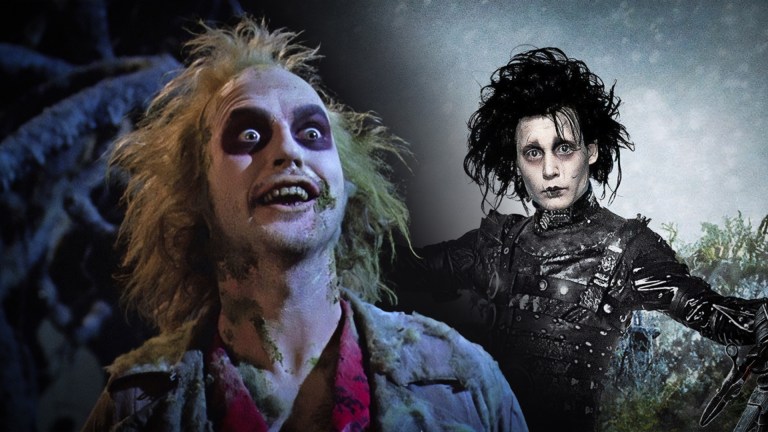
You Have To Find Your ‘There’

A few years ago, I was asked to work on a book project for a blogger and internet entrepreneur in the finance space. This was a person with an enormous list and a very successful business. They had more than 100,000 email subscribers, and from the paying subscribers they had created a business worth several million dollars annually.
As I sat down and read the emails and articles that this site created, looking for the bones we’d build a book around, I quickly ran into a problem: this person was not actually saying anything at all.
The emails were very compelling, don’t misunderstand. They sucked me from sentence to sentence, paragraph break to paragraph break, and then from one article to the next. They were in fact brilliantly written. I just could not figure out what this person was actually selling. The best I could come up with, after really digging into it, for hours and hours, was that the entire premise of this person’s pitch was: Buy options on stocks that go up in value.
Now, I’m certainly a proponent of simplicity and I will grant that often the most powerful messages are the most obvious ones, but that’s not what was happening here. Skilled copywriting and marketing was covering up an undeniable fact: There was basically nothing there. And as a result, it didn’t matter how big the email list was, how great a marketer the owner was, there was not much in the way of a book there. Because a book is about something.
In the short term, this had worked well for him. It kept people coming back subscribed to the emails, thinking that eventually the secrets were going to be revealed. In truth that was never going to happen. It was one of those situations that Gertrude Stein famously said, one where there is no there there.
It’s great to know your why, but if you haven’t nailed down your there, as in, what the hell is this?, that’s a big problem. One that you can only cover for with marketing or being ahead of the curve technologically for so long.
Much of the work that’s created online falls into this category. It’s not that Lele Pons or Amanda Cerny or Logan Paul aren’t funny. Humor is subjective. It’s that there is genuinely nothing there. When one watches their work, you can’t help but feel, as Marc Maron perfectly described, that you are actually being assaulted by a lack of talent. To paraphrase a burn from a classic New York Times piece, while it’s true that less is more, some sadly set new standards of lessness, and actually bask in the void of lessness.
This is not a criticism of the entire medium or generation, of course. If you watch Jerry Seinfeld’s interview with the YouTuber Colleen Ballinger (Miranda Sings), you see that outside the context of her medium (short-form DIY YouTube videos), she’s able to improvise, exhibit a mastery of her character, and keep up with another quick mind. Or if you look at the work of Kirby Jenner, you see that in addition to being truly skilled at photoshop and hitting the same Kardashians joke over and over, he can apply his absurd and strange humor in his stories. Even Tank Sinatra, who built his account mostly in popularizing other internet humor (or tweaking existing constructs and established memes), can make solid jokes on Twitter and create memes of his own (see a good interview with him here). The same goes for Casey Neistat’s videos. He’s not the biggest by any means, but he’s actually doing real work, so he will almost certainly outlast most of his peers.
This critique is not limited to art, it’s true for people too. The person who says their passion is social entrepreneurship but builds nothing and cares about no one. The person who pontificates about every political and cultural issue they can but never departs from a party line or leaves a virtue unsignaled. There is nothing actually there. And they wonder why they never accomplish anything. One of the ironies of Donald Trump, of course, is that a portion of the population responded to him because he seemed authentic and real and stood for things. In fact, he was a crazy mess of contradictions and this allowed him to provoke that reaction from all sorts of different people on different issues. But he was able to win because his opponent, someone far more qualified for the office, could not, for the life of her, give a compelling answer to the question: “Why are you running for president?”
Without a there, what is there? There is nothing.
And yet this is the strategy that most people allow to guide their work and their lives.
Pete Carroll, the coach of the Seattle Seahawks, talks often about the moment that he realized that he didn’t actually have a coaching philosophy. He had, up until that point, just been winging it—doing a little of this, a little of that, changing for each situation. How old was he when he figured that out? 49! (Thank God he did figure it out—and within 14 years he’d won a national championship and a Super Bowl).
It’s essential that we cultivate this ability to stop and look objectively at our own work. One must step back from it and say: Am I really doing good work here? What do I stand for? Am I actually moving towards mastery? Is there any substance to what I am doing?
I know this is not easy to do. I’ve resisted it too. There’s a story I’ve told before, but I’ll do it again: Early in my career, a piece I did on Stoicism took off and I got some interest from a small, hybrid publishing house about turning it into a book. “This would be a great book,” they said, “Many of our clients turn articles like this into books and then speaking careers.” Of course, I was flattered and excited. It was only by the intervention of Robert Greene, a real writer and a mentor of mine, who pushed me to decline. “You’re not ready,” he said. “Put in the work to develop yourself and in a few years you will be capable of actually doing this book at the level it deserves to be done.” He was right. There was not much there there, for me yet. When I looked at the material, I saw that I only had enough for a few chapters.
Now I could have paid to have someone help me work around that weakness. Or I could have, with my marketing abilities and platform, found a way to gloss over it. I am fortunate that I didn’t do this—that someone told me “Fuck your dreams” politely enough that I sobered up. Because if I had, that book would not have gone on to sell a half million copies the way that The Obstacle Is The Way did, and it would not have made its way through the NFL, through the US Senate, or to the CEOs and executives and celebrities that it has. That only happens when there is something actually there.
People often think that ego is helpful because it makes people ambitious. It makes them confident that they can succeed where so many others have failed. This might be true, but more often it’s toxic for precisely the reasons that I have outlined above. To make work that actually sells—that is perennial and important and meaningful—requires humility and dedication. It requires the objectivity and awareness that is made impossible with ego. Ego wants big numbers, not hard work. It wants to be everything for everyone, and often ends up being nothing for nobody.
The client above thought I could slap together a book—but I couldn’t. No one could. And he didn’t like hearing it when I told him that to succeed as a writer outside of his niche (where he was admittedly quite successful), it would require real work. It would require abandoning the crutches of medium. They didn’t, and that’s fine. Their choice.
But if you want to do meaningful and important work you have to push yourself toward substance, stretch your capacities until they are no longer such a stretch. If you want to be a person who people respect, you have to stand for something. Not everyone will like it, but if it’s sincere, they will respect it.
You have to find your there.
Because without it, what are you?
Like to Read? I’ve created a list of 15 books you’ve never heard of that will alter your worldview and help you excel at your career. Get the secret book list here!![]()











